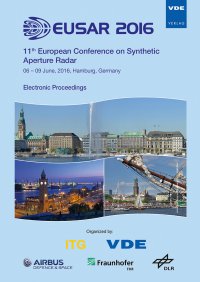Global retrieval of surface soil moisture using L-band SMAP SAR data and its validation
Conference: EUSAR 2016 - 11th European Conference on Synthetic Aperture Radar
06/06/2016 - 06/09/2016 at Hamburg, Germany
Proceedings: EUSAR 2016
Pages: 4Language: englishTyp: PDF
Personal VDE Members are entitled to a 10% discount on this title
Authors:
Kim, S.; Zyl, J.; Colliander, A.; Dunbar, S.; Jaruwatanadilok, S.; West, R.; Yueh, S. (Jet Propulsion Laboratory, California Institute of Technology, Pasadena, CA, USA)
Johnson, J. (The Ohio State University, USA)
Moghaddam, M. (University of Southern California, USA)
Tsang, L. (University of Michigan, USA)
Jackson, T.; Cosh, M. (USDA ARS Hydrology and Remote Sensing Laboratory, Beltsville, MD, USA)
Berg, A. (University of Guelph, Canada)
Caldwell, T. (University of Texas-Austin, USA)
Lopez-Baeza, E. (University of Valencia, Spain)
Thibeault, M. (Comisión Nacional de Actividades Espaciales (CONAE), Argentina)
Walker, J. (Monash University, Australia)
Entekhabi, D. (Massachusetts Institute of Technology, MA, USA)
Abstract:
Surface soil moisture retrievals using radar observations have been challenging due to the strong effects by surface roughness and vegetation scattering. Physically-based forward models for radar scattering are inverted using time-series retrieval algorithm to systematically correct for the effect of the roughness and vegetation. The retrievals are performed for a top 5-cm layer soil moisture at 3-km spatial resolution using the L-band radar data acquired by the Soil Moisture Active Passive (SMAP) satellite globally every three days from mid-April to early July, 2015. These were assessed over 13 rigorously-chosen core validation sites covering a wide range of biomass types and amounts and soil conditions. The soil moisture retrieval performance had an accuracy of approaching the goal of 0.063 m3/m3 unbiased-RMSE (root mean square error), a near zero bias, and a correlation of 0.56. The successful retrieval demonstrates that the physically-based retrieval method is capable of characterizing soil moisture over diverse conditions of soil moisture, surface roughness, and vegetation on a global scale.


